In search of a sustainable conservation initiative in western Yunnan
In late April, the Kadoorie Conservation China (KCC) team visited a number of project sites in Yingjinag and Tengchong counties, western Yunnan. Southwestern Yunnan is part of the Indo-Burma hotspot with extremely rich biodiversity. According to Yingjiang Bird Watching Society (YBWS), over 600 bird species have been recorded in this county of just a little over 4,400 km2, making it a very popular bird-watching site in recent years. However, this bird haven is facing a lot of conservation challenges.
For example, the majority of the small land lots owned by local villagers have been replaced by crop plantations which not only dramatically reduce the food source of birds but directly destroy their habitats. The local tradition of sport hunting also threatens the survival of wild birds. In addition, local villagers are slowly losing their traditional farming skills and losing touch with the Earth, buying their rice from local markets despite owning substantial arable land. Thus, engaging local people in conservation, especially farmers, became the core mission of our trip.
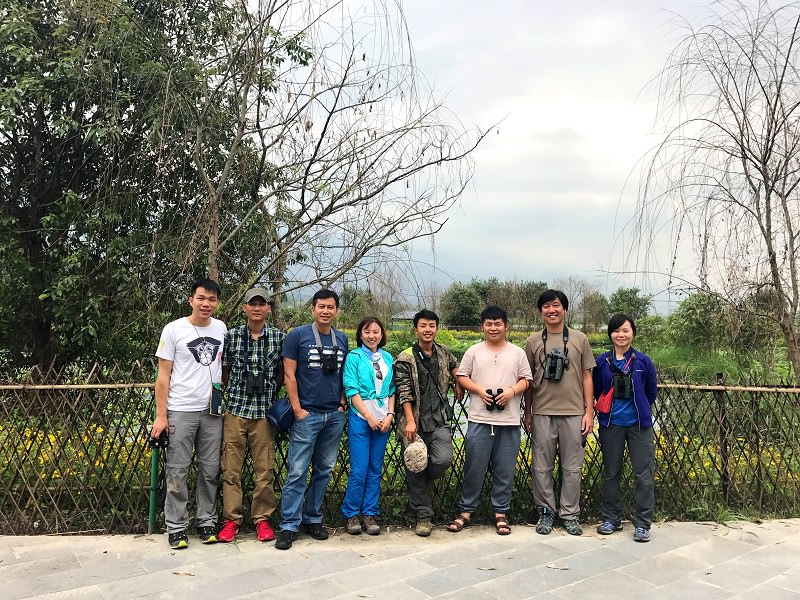
We invited 4 experts from the Hong Kong Bird Watching Society and Yingjinag Bird Watching Society to share the experience.
Background
The small Nabang valley is located in the lowest point of Yingjiang at 210m, and its unique climate and hydrology support diverse habitats for more than 270 bird species. Nabang is therefore considered by local and international bird-watchers as a birding hotspot. Apart from rare species such as the River Lapwing (Vanellus duvaucelii), Red-wattled Lapwing (Vanellus indicus), Ibisbill (Ibidorhyncha struthersii) and Greater Painted Snipe (Rostratula benghalensis), one can find Yingjiang’s iconic low elevation tropical bird species like the Asian Pied Starling (Gracupica contra), Vinous-breasted Starling (Sturnus burmannicus), Wire-tailed Awallow (Hirundo smithii) and Black-hooded Oriole (Oriolus xanthornus), which are rarely seen in the rest of China. The importance of the Nabang valley to China’s biodiversity conservation is indisputable.
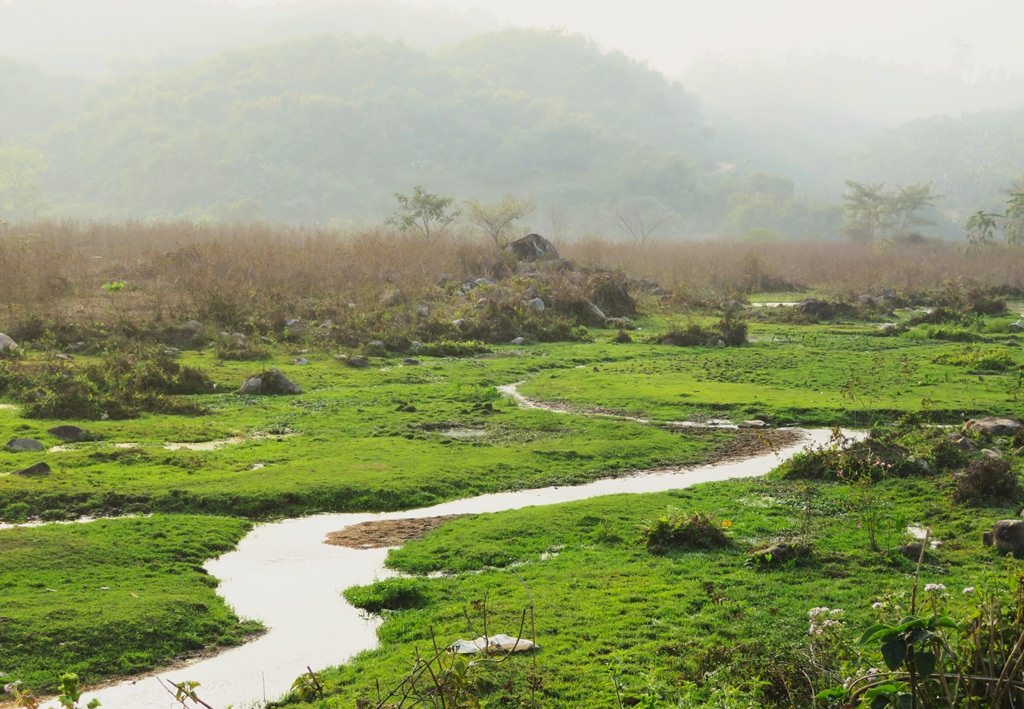 A A tranquil stream flows through the Nabang wetland.
A A tranquil stream flows through the Nabang wetland.
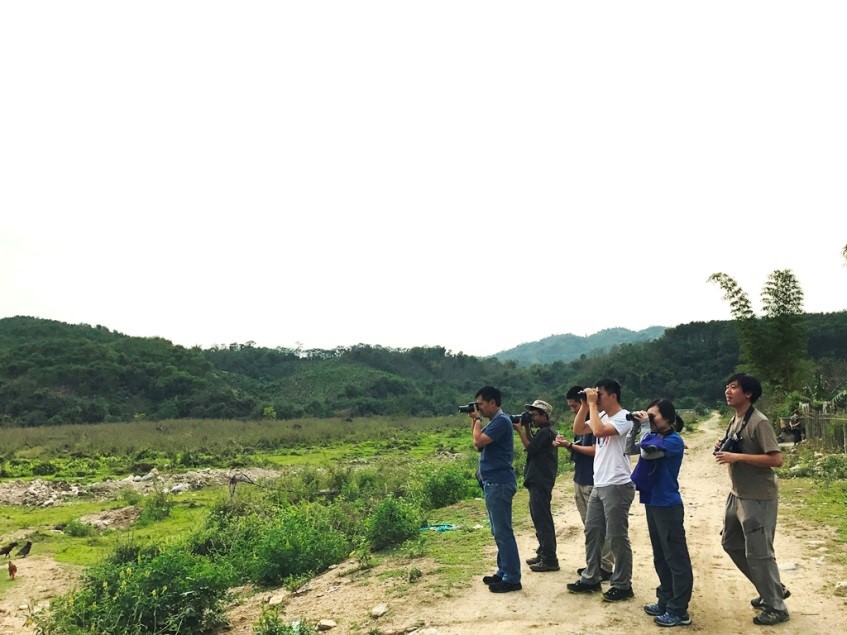 Our team has just spotted the rare Vinous-breasted Starling!
Our team has just spotted the rare Vinous-breasted Starling!
In search of a sustainable conservation solution
In recent years, sadly, local villagers have been converting their community forest into timber plantation, and turning their traditional farmland to large-scale crop plantation. The biodiversity value of Nabang Wetland is being degraded with the loss of the diverse agricultural matrix. Farming and timber plantation are the major livelihood options for the local people, so unless an alternative is provided the villagers will just continue their practice. A sustainable conservation initiative which balances income-generation and biodiversity conservation must therefore be formulated, if the trend of land-use conversion are to be reversed. We are exploring the possibility of using bird-watching activities to generate income, so that villagers are willing to preserve their community forests and retain the traditional farming practices. At the same time KCC is working with the villagers to restore some of the wildlife habitats, and working with the local government to design a wetland reserve to protect the key species and habitats. Hopefully, they will actively participate in biodiversity and farmland conservation, as in the Long Valley of Hong Kong.
Luckily, both county-level and township-level governments really value the importance of biodiversity conservation of the Nabang Wetland. With their open-mindedness and support, we are hoping to create a sustainable local livelihood whilst preserving invaluable natural heritage.
Sharing our experiences of Hong Kong and Hainan
With our local government partner, we held a sharing session with the Nabang villagers one evening during our trip. Experts from HKBWS presented their success stories of Long Valley. Our team also shared our community-based conservation project in Hainan’s Daoyin and pointed out the possibilities for Nabang. Villagers were really excited about the idea of creating alternative income and to restore their farmlands and associated wildlife. The meeting ended at 10 o’clock at night with every villager actively participating!
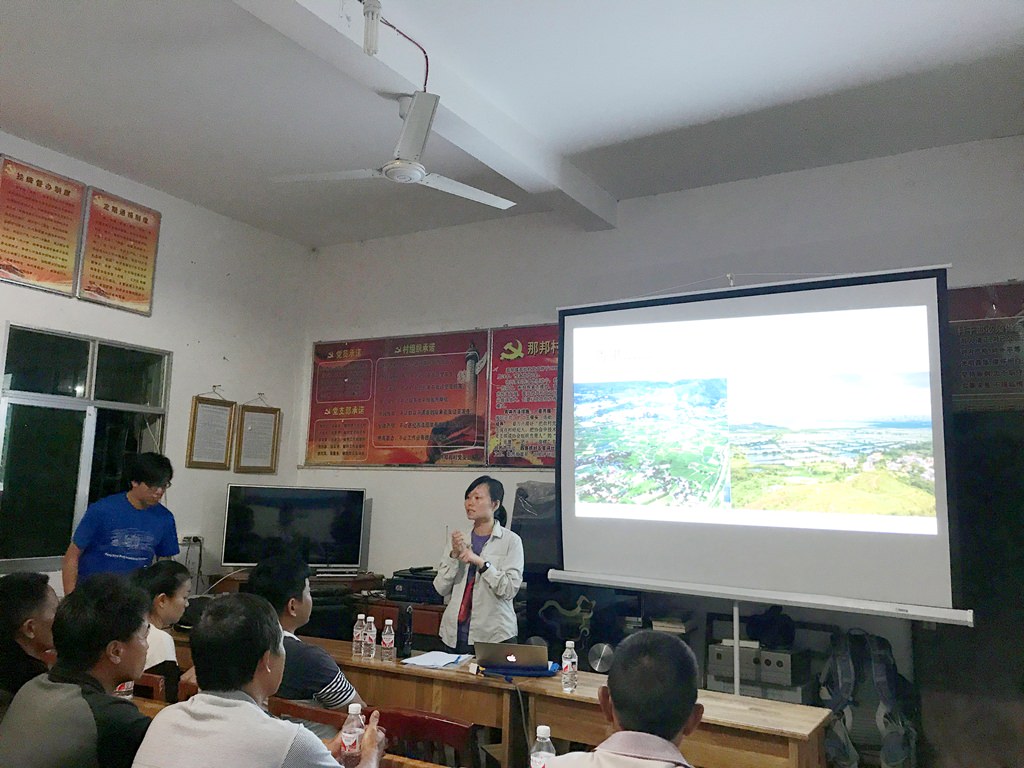 Ms. Vicky Yeung of HKBWS shares her 10 years of experience in wetland management in Long Valley.
Ms. Vicky Yeung of HKBWS shares her 10 years of experience in wetland management in Long Valley.
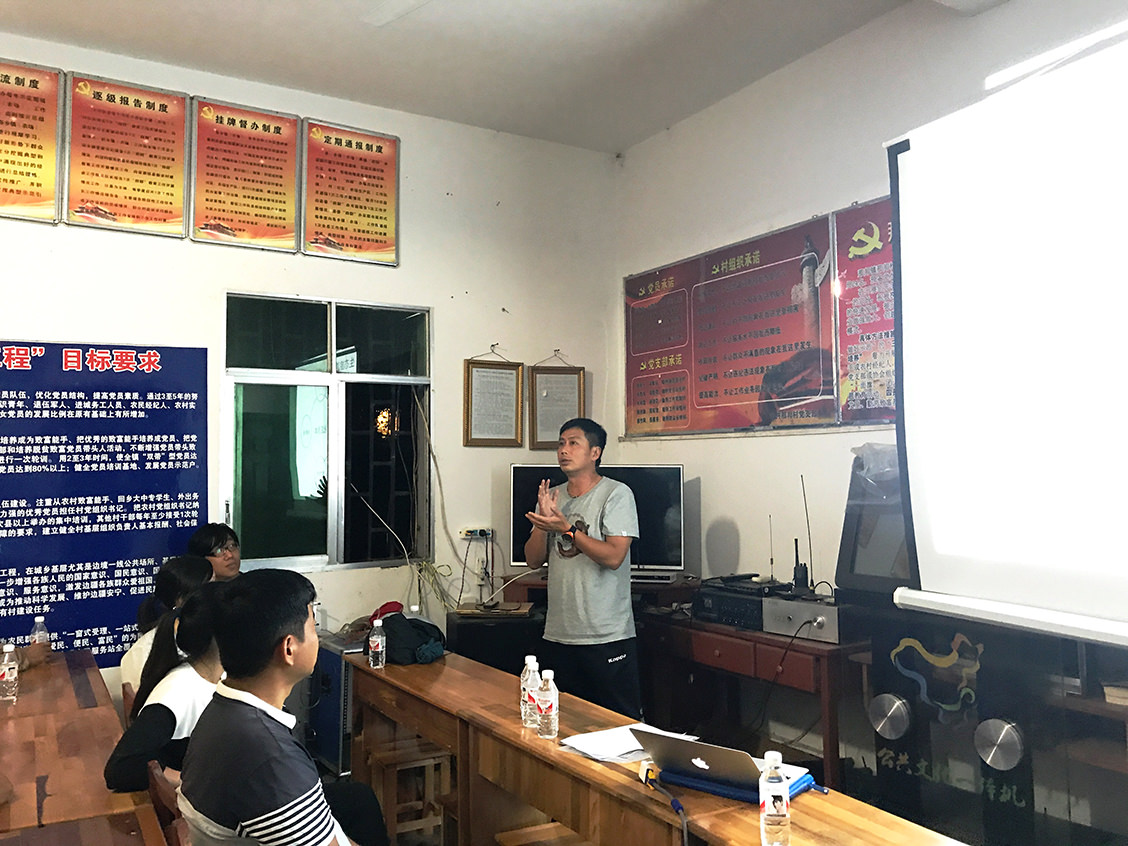
 Kadoorie Conservation China presented the advantages and possibilities of Nabang of community-based conservation project, stressing the importance of governmental and non-governmental support, fair sharing of benefits and transparent management of community-based conservation initiatives.
Kadoorie Conservation China presented the advantages and possibilities of Nabang of community-based conservation project, stressing the importance of governmental and non-governmental support, fair sharing of benefits and transparent management of community-based conservation initiatives.
Integrating Women into Community-based Conservation Projects
Women have an important role in community development; empowering women and building their capacity in conservation has become a global trend nowadays. In view of this, we also put emphasis on engaging women in this project. In fact, women in Nabang are very interested in this idea and even invited us to investigate their own farmlands after the evening meeting, expressing their willingness to revitalise their paddy and maize fields to attract birds and restore the iconic bird species of Nabang. The female mayor of Nabang Town is also planning to establish a Nabang bird watching society to engage villagers to participate in birding activities and conservation campaigns.
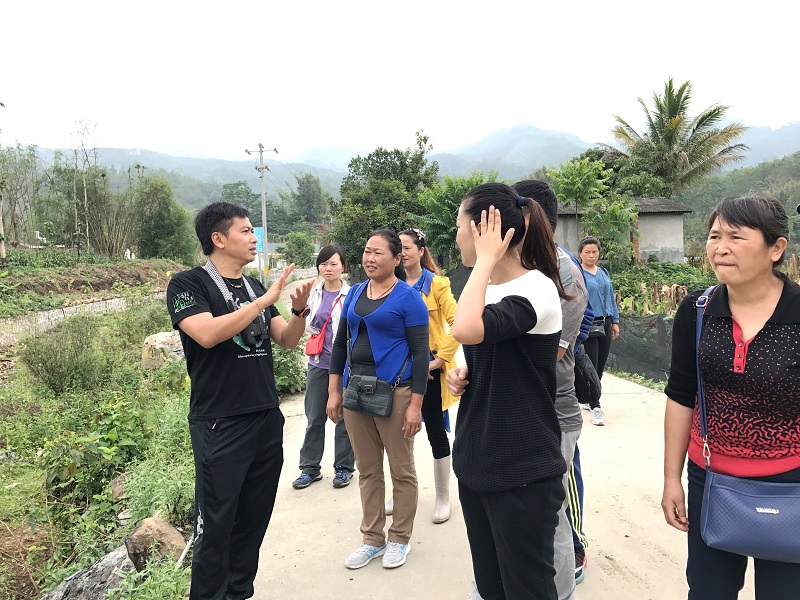
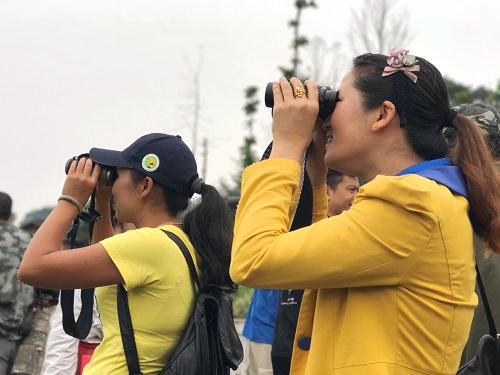
Our potential female bird guides were absorbed in learning about conservation and birding skills from our experts.
Conservation by private land owner: a new hope for China’s conservation
Another project site we visited during this trip was ‘Orchid Valley’ in Jinzhuzhai village. ‘Lady Orchid’, the owner of Orchid Valley as she is affectionately known, bought this farmland with a patch of old-growth forest a decade ago but does not want to log the forest to make a fast buck. Instead, she kept the forest and only planted some fruit trees in the vacant lot to earn a living.
With ten years passing, the biodiversity of the area has been maintained, if not enhanced. You can easily see fascinating wild orchids in her ancient forest patch, hear wild boars moseying around the peach trees in the evening, watch sambar and barking deer frolic from bush to bush, listen to the calls of frogs and birds from dawn to dusk. Orchid Valley has become a must-go destination for many biologists visiting Yingjiang as well as a popular site for birders. However, there are two sides to every coin, the undisturbed forest attracts wildlife to visit and also ‘invites’ them to raid the orchard and prey on the owner’s chickens. Lady Orchid is now in a dilemma as she can barely make ends meet.
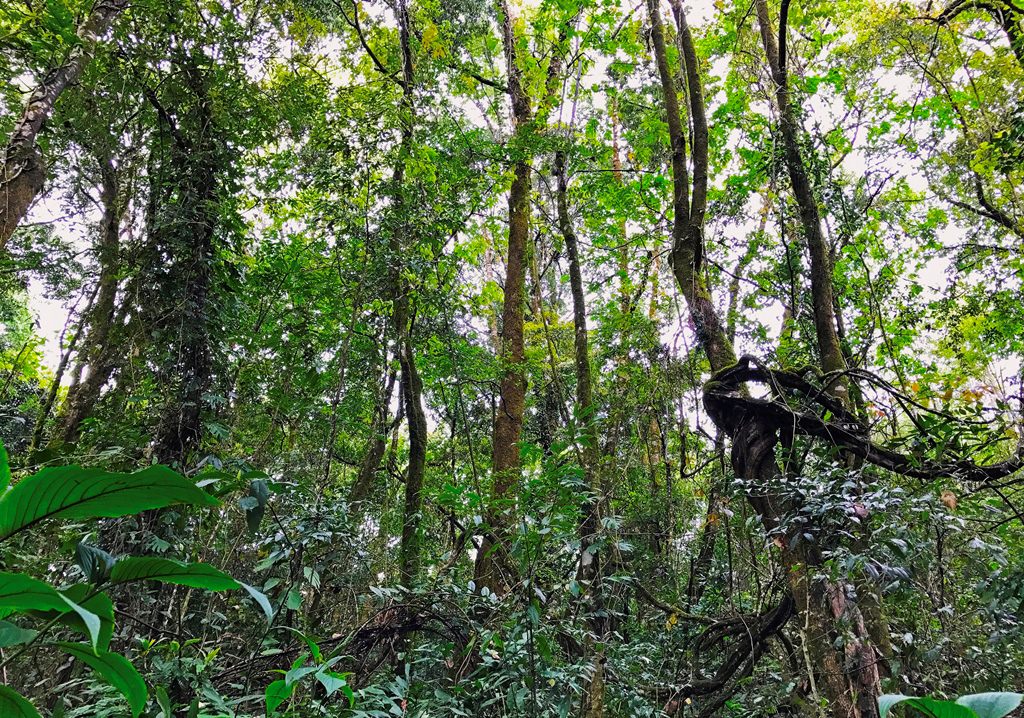
The old-growth forest in Orchid Valley.
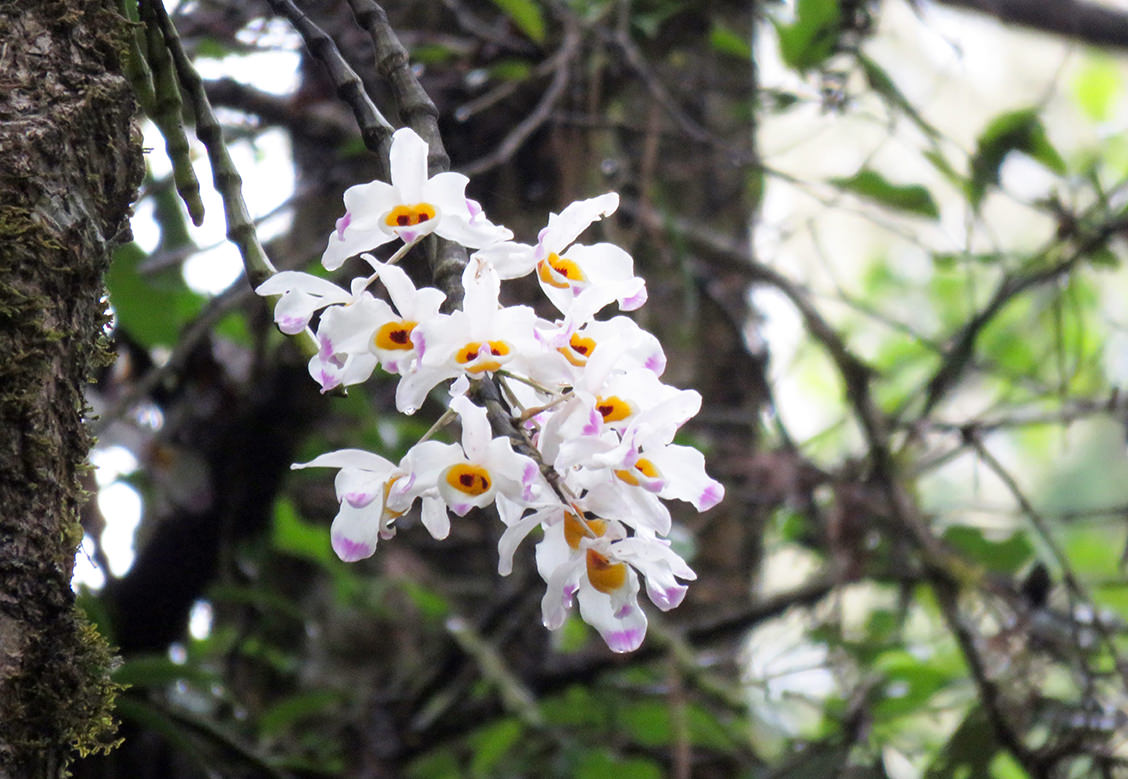
Blooming Dendrobium orchids in Orchid Valley.
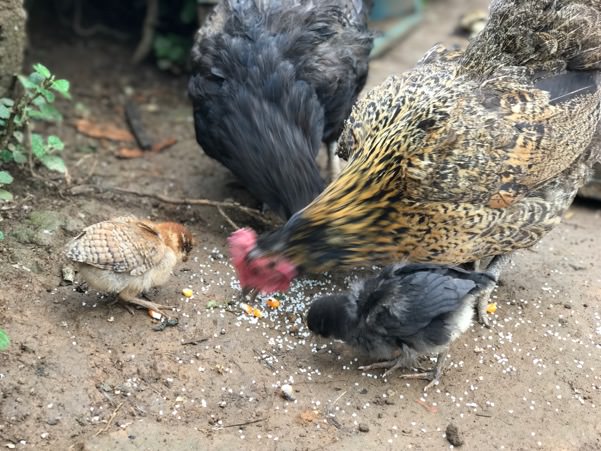
Free-range chickens in Orchid Valley farm.
Thanks to the years of effort made by Lady Orchid, the well protected ancient forest supports abundant flora and fauna, attracting scientists and naturalists to visit. Thus, we believe it has great potential to become a best-practice eco-lodge in China. With the help of our agro-ecosystem and conservation experts - plus the financial support of the Critical Ecosystem Partnership Fund (CEPF) - we are hoping to integrate both theory and practice to sustain the operation of Orchid Valley whilst simultaneously protecting the wildlife in the forest.
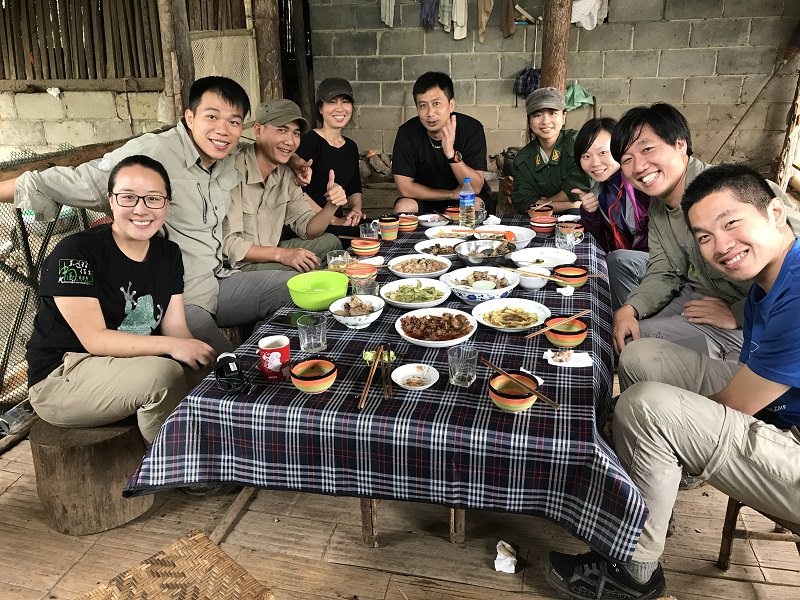
A group photo of our team with Lady Orchid and her lovely daughter (ladies with hats).
The Next Birders’ Haven: Tengchong, Gaoligongshan
The final destination of this trip was Tengchong of Gaoligongshan. Baihualing, on the other side of the Gaoligongshan Mountain, is an internationally-renowned bird haven. The biodiversity in Tengchong is as rich as Baihualing, with more than 350 bird species including rarities like Sclater's Monal (Lophophorus sclateri), Temminck's Tragopan (Tragopan temminckii), Mrs. Hume’s Pheasant (Syrmaticus humiae), Lady Amherst's pheasant (Chrysolophus amherstiae) and different babblers.
The Rare Flora and Fauna Protection Association of Tengchong (RFFPA), a local conservation group, seeks to create a community-based conservation programme to increase villagers’ knowledge of wildlife conservation, encourage them to participate in biodiversity protection and become advocates for local conservation in the future. By establishing a team of village wardens and sharing the experience of creating a bird feeding station they hope the villagers can see the value of protecting biodiversity and habitats. The intention is that this can work as a business model by attracting birders to visit, thus providing villagers with an alternative livelihood, rather than clearing more forest for agriculture.
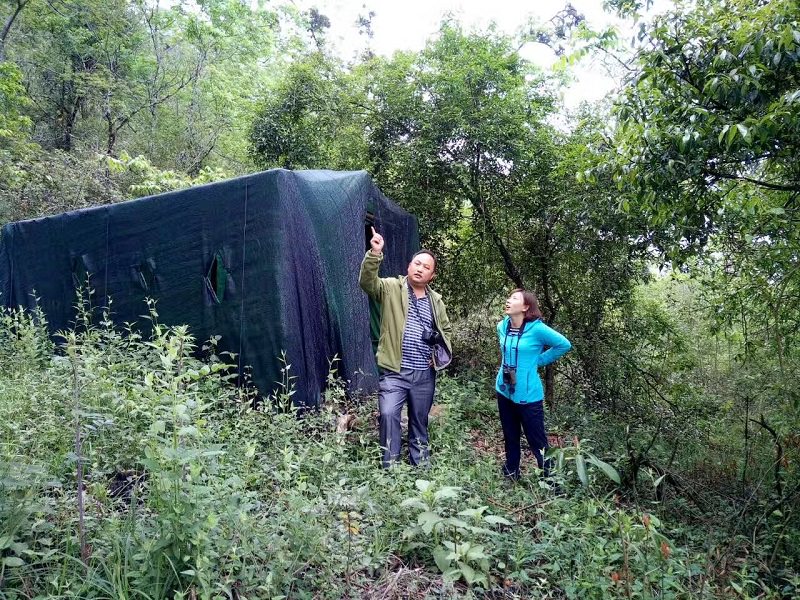
Mr. Huang of RFFPA showing us their bird feeding station.

